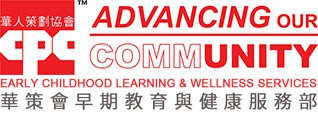How to Choose Quality Child Care
Quality Indicators
When looking for a new child care situation, there are six main quality indicators that should be considered, according to the National Association of Child Care Resource and Referral Agencies. Keeping these in mind during your search will help you determine if a setting is in the best interest of your child.
- Group Size – Find out how many children are in the group. The smaller the group, the better. Imagine a group of 25 two-year olds with five adults, compared to a group of 10 two-year olds with two adults. Both groups have the same adult to child ratio. Which would be calmer and safer? In which group would your child excel?
- Ratio – The number of staff required in a child care home or center depends not only on the number of children in that setting but also on the ages of the children.
- Family Involvement – Ask a prospective child care provider about their policy on family involvement. You want to see opportunities to be involved in activities, with regular parent meetings held. You should feel welcome anytime.
- Caregiver Education & Staff Turnover – Ask about the teacher who will be in your child’s room. How long has the teacher worked in the program? What is his/her educational background? You do not want to see a high staff turnover in a child care center. How long has the family child care provider been running her program? Is he/she involved with a support group? As a parent, you want to be assured that the people who will be caring for your child are not stressed, but rather, well supported with a network of professional colleagues. You want to know that the staff is knowledgeable and understand appropriate development, activities, and behaviors for children.
- Health & Safety – The environment should be clean, with an emphasis on hand-washing. Tables are washed. Electrical sockets are covered. Staircases are childproofed. Toys and equipment should be clean, used, and not broken. Outdoor play spaces must be free of hazards of all kinds. Common hazards include access to a busy street, broken glass or peeling paint, tools, and construction materials.
- Accreditation – This means that a child care center or family child care provider has made a commitment to provide a high quality program for young children and their families. Ask a director of a child care center if they are NAEYC accredited (National Association of Education of Young Children). For additional information on NAEYC accreditation, go to www.naeyc.org. Ask a family child care provider if they have a CDA (Child Development Associate). For additional information on CDA, go to www.cdacouncil.org . Family child care providers may also become accredited with NAFCC (National Association of Family Child Care). For additional information on NAFCC accreditation, go to www.nafcc.org
